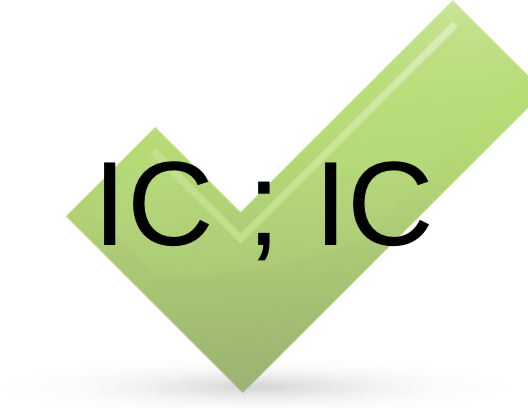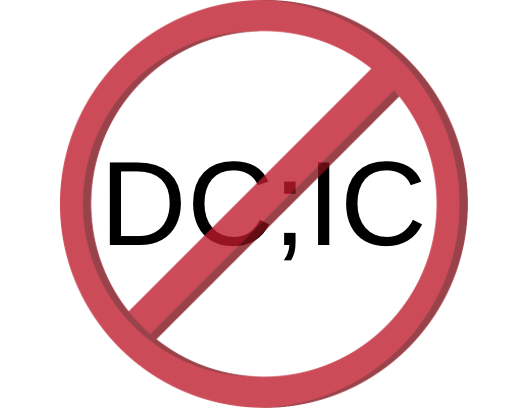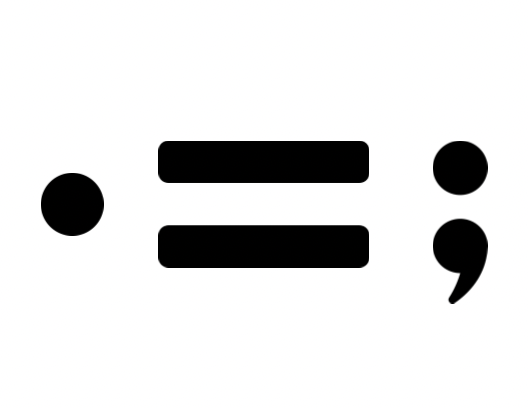As we’ve said previously, punctuation questions are the easiest questions to get under your belt. Semicolons on the ACT are no exception to this rule. In fact, they’re some of the easiest ways to score points!
There are two ways to use the semicolon on the ACT; however, the first way we’ll show you is the one you’re going to see 99% of the time.
Like we’ll see when mastering comma questions, all you have to do is understand what kind of clauses the semicolons connect and separate. Here’s the secret:
Remember, an independent clause is a clause that can stand alone. In other words, it’s a complete sentence. When you have two independent clauses that are related, you can put a semicolon between them.
First, we need two independent clauses:
Independent Clause 1: He likes red.
Independent Clause 2: She likes green.
To use a semicolon correctly, we just combine the two independent clauses and drop a semicolon between them, like this:
He likes red; she likes green.

See? That’s not too bad.
Here’s how to NOT use a semicolon.
Dependent Clause: With pepper spray in his eyes
Independent Clause: He could not see clearly
With pepper spray in his eyes; he could not see clearly.
The semicolon isn’t doing its job here. Do you see the issue?
Do you know the answer?
Answer: The clause on the left side of the semicolon isn’t an independent clause. It’s a dependent clause. Thus, we can’t use a semicolon here.

As we’ve said, a semicolon connects two independent clauses. But isn’t there another punctuation mark that does the same thing? What do you think it is? Hover your cursor over the “spoiler” below to see the answer).
Hint 1:
It’s the most common punctuation mark.
Hint 2:
You probably use it dozens of times every day.
Hint 3:
It’s likely the first punctuation mark you learned how to use.
Do you know the answer yet?
Answer: The period.
Yep. A semicolon functions just like a period (at least as far as the ACT is concerned). Now that you’re in on the secret, here’s a trick that we guarantee you’ll need to use on EVERY ACT ENGLISH TEST (so pay attention).
Fact 1: There can never be two correct answers to an ACT question.
Fact 2: The period and semicolon do the same thing; so, if you come across a question where two answers have the exact same wording, but one answer has a period and the other answer has a semicolon, they’re both wrong… EVERY SINGLE TIME.

Here’s an example:
Because clowns have always scared me. I’ve never gone to the circus.
A. No change
B. me; I’ve
C. me, I’ve
D. me, so I’ve
Both choice A and choice B are identical except for their respective punctuation marks. Do you see how choice A has a period and choice B has a semicolon? Since a period and semicolon do the same thing, on the ACT, if one of them is correct, the other must be correct. However, On the ACT, we can never have two correct answers. So both answers must be wrong. Thus, we can confidently delete them both.
A.
No change
B.me; I’ve
C. me, I’ve
D. me, so I’ve
Thanks to this trick, we’ve already eliminated half the options. Now, all we need to do is to make sure the clauses the remaining punctuation marks are being connected to are the right punctuation marks.
Knowing everything you know now, see if you can pick the correct answer.
Answer: C. me, I’ve
To the left of the comma in choice C, we have a dependent clause (“Because clowns have always scared me”). To the right of the comma is an independent clause (“I’ve never gone to the circus”). Choice C is correct because commas primarily connect independent clauses to dependent clauses, which is what’s happening here. We wouldn’t use a semicolon or period, because they connect two independent clauses together.
Choice D is incorrect because the word “so” functionally turns the right side clause into a dependent clause. This would give us two dependent clauses and no independent clauses. That won’t work, since we have to have an independent clause somewhere in a sentence to be an appropriate sentence in the first place.
We can’t stress this enough: you will encounter this punctuation scenario on the test. So, if you remember this small trick, it will be an easy way to reliably score points.
Congratulations!
You know how to use a semicolon. It’s pretty easy once you know the rules. But don’t just use the semicolon on the ACT, use it in school. You can use it on your papers and writing assignments. (Don’t overdo it. Try to use it only once every two paragraphs at most… any more than that might be a little pretentious.) It’s a complicated punctuation mark to use so being able to implement it in an assignment correctly demonstrates an impressive degree of skill. Using the semicolon will also add variety to your writing as well.
Sign up for free to take 12 quiz questions on this topic